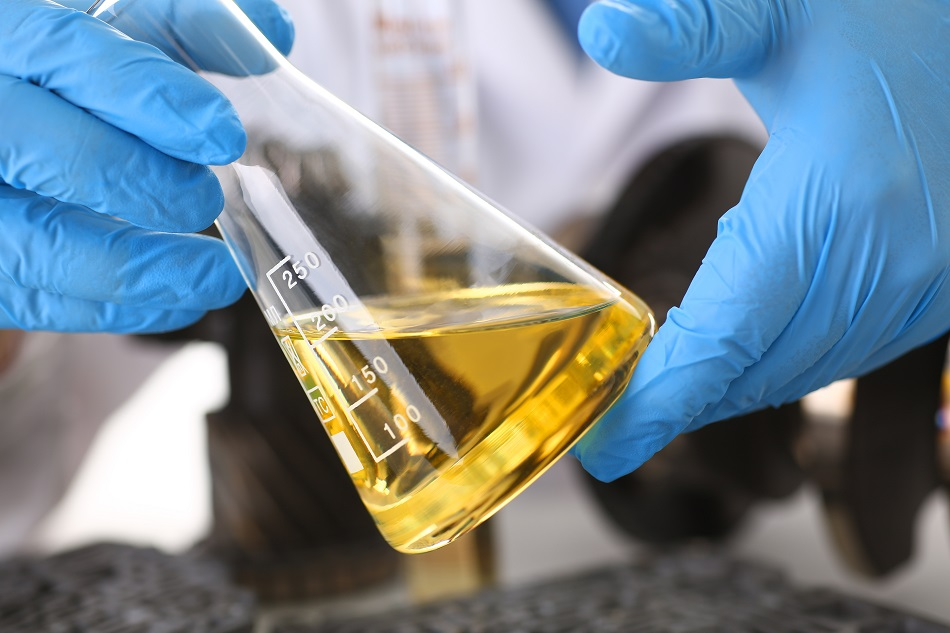
Image Credit: H_Ko/Shutterstock.com
The widespread automation of industrial processes is not uncommon, and its incorporation into the petroleum industry can already be found in several small-scale ways. Future automation of the chemical analysis techniques utilized by the petroleum industry will inevitably revolutionize the way in which petroleum samples are refined and assessed for both performance and safety properties.
Automation in Analytical Chemistry
Since the origin of chemistry in 1761, a vast amount of technological advancement has transformed early chemical instruments into highly sophisticated techniques that are now approaching full automation. Much of the trend towards automation in chemistry is attributed to the interface and miniaturization of these traditional systems into electronic gadgetry. In fact, between 1960 and 1965 analytical chemistry instruments experienced their most significant move towards automation as a result of inventions like syringe pumps, Crozet motors, cam timers, syringe dispensers, and analog displays.
Full automation of analytical chemistry, which has already been achieved in some cases, will involve the extensive replacement of manual and semi-autonomous laboratory analytical instruments. These will be replaced with quality-control instruments that have been integrated with automatic-control systems capable of continuous and autonomous operation.
Significance of Petroleum Analysis
The quality of any petroleum sample is determined by the measurement of its various physical properties which can include its specific gravity (also known as relative density), its refractive index or viscosity. By determining these values, refiners are able to have a better understanding of a given petroleum sample’s composition. This information assists the refiner in determining how raw petroleum should be converted in order to yield high-value products.
Outside of the industrial production process, petroleum chemical analysis also provides environmentalists with information on the potential biological impact that could occur once a given petroleum sample enters the environment.
Automating the Petroleum Industry
Similar to many other industries, energy companies are also becoming increasingly interested in how automation solutions can revolutionize the way in which their daily tasks are completed. In a recent study conducted by the McKinsey Global Institute, it is estimated that up to 63% of the processes currently performed by energy companies can be converted into fully autonomous technologies to ultimately save time, labor costs, and to improve overall operational efficiency.
Current applications of artificial intelligence (AI) in the energy sector can be found in almost every aspect of this industry, ranging from how individual employees are managed, and how specific production processes are achieved, to almost every technological system used within this industry. As AI technology continues to evolve, many petroleum companies will continue to set up dedicated automation competency centers that are focused on investigating new ways in which their business can move towards full automation.
Click here to find out more about different chemical analysis equipment.
Automated Petroleum Chemical Analysis
Molecular spectroscopy techniques have been widely used throughout the petroleum industry for quantitative analysis of hydrocarbon concentration present in different crude oil mixtures. In fact, some techniques like ultraviolet (UV) spectroscopy and mass spectroscopy (MS) have been used to determine the specific hydrocarbon types ranging from aromatics by UV spectroscopy to paraffin, cycloparaffins, and olefins by MS.
Some other spectroscopic techniques that have proven vital to petroleum chemical analysis include infared spectroscopy, nuclear magnetic resonance (NMR) and X-ray diffraction.
While the autonomous versions of these analytical techniques have not been fully integrated into the petroleum industry, it is expected that petroleum analysis will continue to evolve with the advancements made within analytical chemistry tools. For example, a recent 2019 study discussed a portable and self-contained NMR spectrometer that was based on System-on-Chip (SoC) technology.
Similarly, several different research groups have also investigated ways in which infrared spectroscopy can improve by a transition to a fully autonomous instrument. A recent 2019 study conducted by Scottish researchers discussed the development of an autonomous multi-species, gas-sensing unmanned aerial vehicle (UAV), or drone, that has been integrated with a broadband Fourier-transform infrared spectrometer. As one of the most efficient methods capable of detecting petroleum hydrocarbons (like unresolved complex mixtures [UCM], which can be indicative of petroleum degradation), the automation of infrared spectroscopy through this type of drone instrument could significantly change the way in which both safety and operational assessments of petroleum samples are performed.
References and Further Reading
- Stanley, R. (1984). Automation in analytical chemistry – from rule of thumb to fully autonomous methods. Some philosophies and social consequences. Journal of Automatic Chemistry 6(1); 6-13. DOI: 10.1155/S1463924684000031.
- “Automating the Petroleum Industry, from Wells to Wheels” – Cognizant
- “Analytical Methods and Techniques Applied to Crude Oil and Petroleum Products”– Encyclopedia of Life Support Systems (EOLSS)
- Ariando, D., Chen, C., Greer, M., & Mandal, S. (2018). An autonomous, highly portable NMR spectrometer based on a low-cost System-on-Chip (SoC). Journal of Magnetic Resonance 299; 74-92. DOI: 10.1016/j.jmr.2018.12.007.
- Rutkauskas, M., Asenov, M., Subramanian, R., & Reid, D. T. (2019). Autonomous multi-species environmental gas sensing using drone-based Fourier-transform infrared spectroscopy. Optics Express 27(7); 9578-9587. DOI: 10.1364/.OE.27.009578.
Disclaimer: The views expressed here are those of the author expressed in their private capacity and do not necessarily represent the views of AZoM.com Limited T/A AZoNetwork the owner and operator of this website. This disclaimer forms part of the Terms and conditions of use of this website.